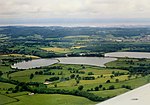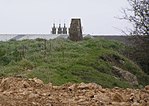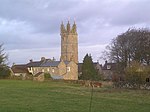Hartcliff Rocks Quarry
Bath and North East SomersetEnglish Site of Special Scientific Interest stubsQuarries in SomersetSites of Special Scientific Interest in AvonSites of Special Scientific Interest notified in 1991 ... and 2 more
Somerset geography stubsUse British English from February 2023

Hartcliff Rocks Quarry (grid reference ST534662) is a 1.6 hectare (3.9 acre) Site of Special Scientific Interest (SSSI) near Felton, Somerset notified in 1991. According to the citation, the site "provides exposures of Triassic Dolomitic Conglomerate unconformably overlying Carboniferous Limestone."
Excerpt from the Wikipedia article Hartcliff Rocks Quarry (License: CC BY-SA 3.0, Authors, Images).Hartcliff Rocks Quarry
Rocks Lane,
Geographical coordinates (GPS) Address Nearby Places Show on map
Geographical coordinates (GPS)
| Latitude | Longitude |
|---|---|
| N 51.39291 ° | E -2.67115 ° |
Address
Rocks Lane
Rocks Lane
BS40 9YR
England, United Kingdom
Open on Google Maps










